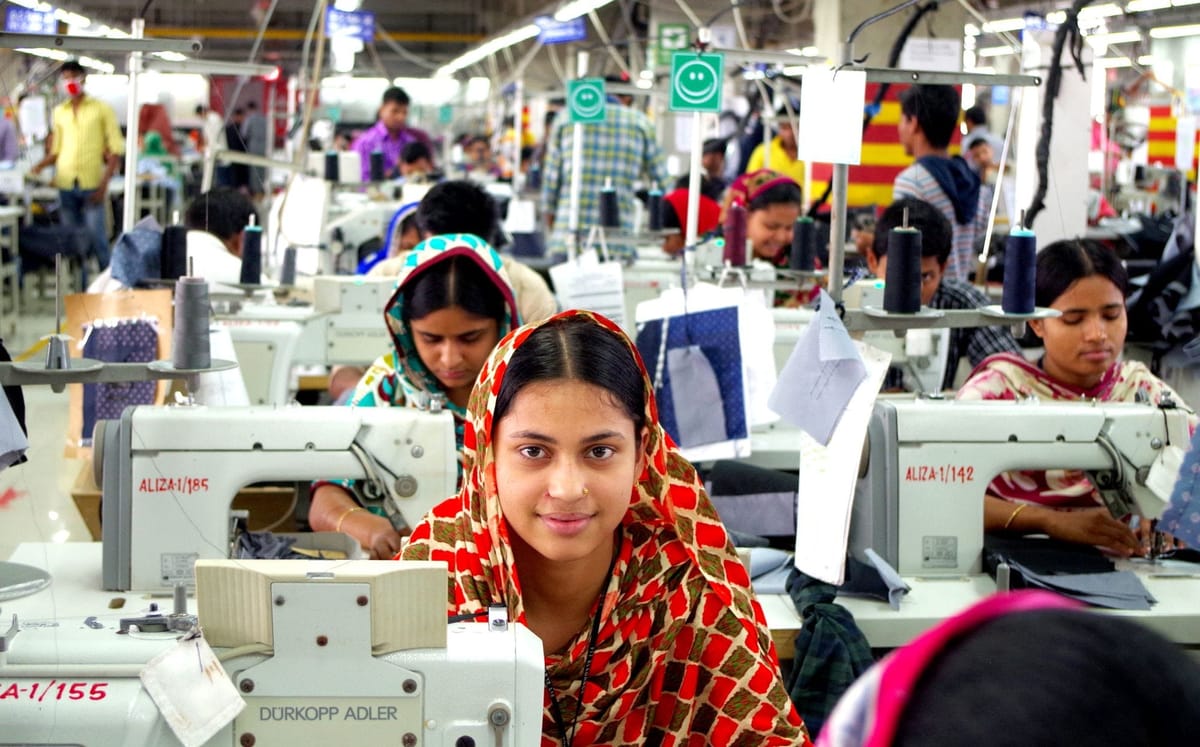Textile and Fashion Industries' Labor and Environmental Woes
The textile and fashion industries have recently been in the limelight, especially in places like Bangladesh.

The textile and fashion industries have historically been associated with numerous scuffles between labor unions and factory workers. These sectors’ labor woes can be traced back to cotton farming in the United States in the 18th and 19th centuries. Cotton farmers enslaved Africans and forced them to work in their cotton plantations. Forced labor was the source of labor for cotton farming at the time. Numerous communities and indigenous Africans suffered decades and centuries under slavery and were forcefully exploited to work in cotton fields in places like Mississippi.
A Lack of Regulatory Oversight and Poor Working Conditions Leading to the Loss of Fashion Industry Factory Workers' Lives
The textile and fashion industries have recently been in the limelight, especially in places like Bangladesh, where a lack of regulatory oversight and poor working conditions led to the loss of workers’ lives. A textile factory building collapsed back in 2013, seeing numerous factory workers lose their lives. The incident was a testament to the textile and fashion industry workers’ poor working conditions in South Asia. Fashion companies source most of their fabric and woven clothing from South Asian countries as production and labor costs are cheaper than in the West.
India's Infringement of Textile Industry's Workers' Rights
Controversies have also marred the textile industry in India due to the infringement of workers’ rights. Numerous factory workers have decried terrible working conditions and menial pay. There have also been calls to unionize in some parts of India where textile and fashion workers lack a representative body or union to fight for their rights. The unfortunate thing is that efforts to unionize have, in some parts, been heavily opposed by factory owners and other industry players.
The Fashion Industry is One of the Most Pollutive in the World
The fashion industry is one of the most pollutive industries in the world. Millions of tonnes of textile waste are burnt or dumped every year as the fashion industry has, over the years, been a consumerist industry. Consumers also buy more clothing and accessories than they need, meaning that they are likely to discard an item after only a few times of use.
The unfortunate thing is that when we wear our clothing less and are quick to throw it away, we harm the environment and exacerbate climate change. Consumerism also means that consumers feed into factory workers’ plight as increasing demand means that textile producers will likely seek cheaper labor to meet surging demand.
Why You Should Buy Sustainably-Produced Clothing and Recycle
We should seek to recycle our clothing or buy clothing that has been sustainably produced. It may be more expensive, but it would be better for the environment and textile workers. When you buy an item at a more expensive rate, the textile producer and worker will be paid more per unit of clothing. As a result, fewer factory workers will be exploited, and you, as the consumer, can take pride in knowing that you bought something that was good for the environment and fashion and textile workers.
We can all do our part to ensure the preservation of labor conventions and fair labor practices by ensuring that we source our clothing and accessories from sustainable producers and producers who have a track record of ensuring fair labor practices. Do not be persuaded by pop culture to buy more clothing and accessories than you need in an attempt to be more fashionable.
The Environmentally Expensive Nature of Cheap Fashion
Cheap fashion may seem attractive and easier to buy but has grave consequences for factory workers and their families. Consumerism and buying clothing in a consumerist way also negatively affect the environment and exacerbate climate change. Fashion should be timeless, and one should only buy the clothes and accessories that they feel could last them a considerable amount of time.
Creative Ways to Buy with the Intent To and Actually Recycle Clothing or Retain Clothing Items for Longer Periods of Time
For instance, one should buy pieces that can go well with numerous other pieces and styles to mix and match with other clothes and accessories. A huge part of this is ensuring that one buys clothing with subtle colors like grey, white, or black. These are easier to blend with other items and accessories. Be climate-conscious and do your part in ensuring that you source your textiles and fashion from companies that exercise fair labor practices and source and produce the items in an environmentally friendly way. Do not let pop culture influence your overconsumption of fashion.





